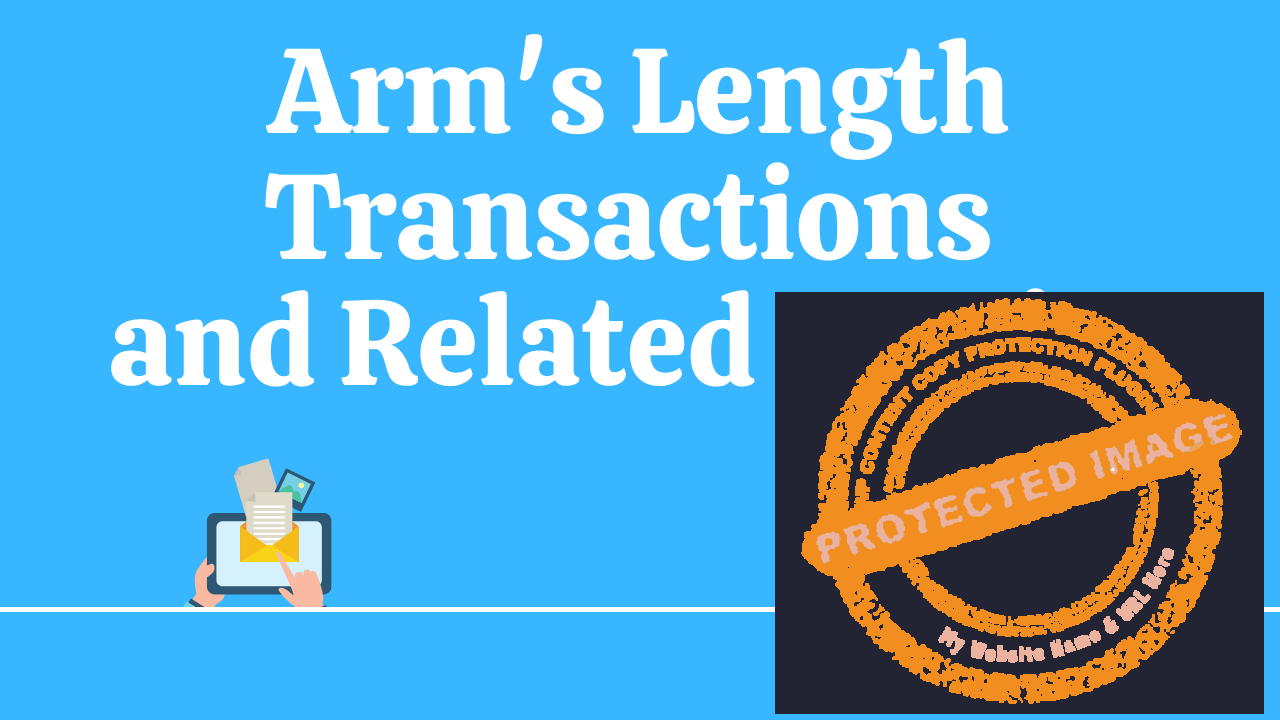Transactions take place everyday. In Kenya, VAT-registered taxpayers transact business with persons requiring goods and services. Some of those persons are either people who are related to them, acquaintances, or strangers.
According to Kenyan tax laws, all clients or customers are expected to be charged the same prices without fear or favor.
The customers or clients should be charged market-driven prices that depend on market forces of demand and supply. Essentially, the prices are expected to be arm’s length prices since the transactions are expected to be arm’s length transactions.
Why this post?
Every taxpayer should be aware that if they have transactions with any person the KRA can categorize as a related party, the price will be adjusted. Principal tax, penalties, interest, and possibly prosecution measures may be undertaken. Therefore, taxpayers need to know the persons who may be categorized as related parties.
Arm’s length provisions apply in all tax systems in Kenya.
Questions
- What is an Arm’s length transaction?
- Who are related parties in transactions for taxation purposes in Kenya?
Arm’s Length Transactions
All transactions in Kenya are subject to VAT. The transactions are classified as either vatable or exempt from VAT. It is expected that all transactions are at arm’s length.
But what is an arm’s length transaction?
An Arm’s length transaction is a transaction that is conducted without being influenced by the relationship between the seller and buyer. In arm’s length transactions, prices are market-determined subject to forces of demand and supply. These are transactions where the price charged to every person is the same irrespective of whether the seller and buyer are related.
In transactions that are not at arm’s length, the prices are either inflated or suppressed depending on the circumstances and the reasons. The inflation or suppression of prices results in reduced taxable income hence, lower corporate income tax. The hidden prices also result in lower consumption taxes s that are charged based on price.
The following examples illustrate how prices are either inflated or suppressed to lower taxable income.
Import Duty in Non-arm’s Length Transactions
When persons want to remove money from a country, they may inflate the price of the imports, thus increasing the import expense, resulting in lower taxable income hence low-income tax. Equally, when people want to remove money from the country, they can suppress the price of exports. This will result in lower reported export sales, reducing the taxable income and hence lower income tax.
Example:
Odhiambo is a business partner with Abdul. They import vehicles for sale from Japan. In 2018, they imported from Japan vehicles worth kshs 100million. However, though the vehicles were being shipped from Japan, The business partners had an office in Sharjah. All vehicle sales to Kenya were charged an additional 20% to maintain that office. Therefore, the vehicles arrived in Kenya at the cost of kshs 120million.
Question
What was the tax implication in Kenya of charging 20% extra to maintain the office in Sharjah?
Answer
The 20% charge on the imports increases import expenses by kshs20million. This increases the import duty, which is recouped from the consumer, thus making the goods more expensive. There will be a direct loss of income tax on the untaxed kshs 20 million at 25%. The lost income tax is kshs 20 million x 25% = kshs 5 million plus the loss due to the increased expenses from higher import duty amounts.
Income tax on Non-arm Length Transactions
Taxable income depends on sales and expenditures. Income Tax Act Section 15 of the Income Tax Act allows the deduction of all expenses used to generate taxable income as far as the Matching Principle is followed.
When persons want to report lower taxable income, they can either inflate the expenditure or suppress sales. Related parties can engage in expenditure inflation or sales suppression. This will result in lower taxable income hence lower income tax.
Example 1:
Kamau imports goods from China. However, he has an office and a business in Dubai where the goods are reinvoiced. In 2019, Kamau imported raw materials from China valued at kshs 200million. However, the invoices from China were sent to his company in Dubai which issued other invoices for kshs 300million.
The raw material was imported into Kenya with the sales invoices from the company in Dubai. In 2019, Kamau’s total sales were kshs 400million. In the same year, Kamau had other deductible expenses amount kshs 50million.
Question:
How much income tax was lost from Kamau’s actions of inflating import prices? (Assume income tax at 25%)
Answer:
Inflated price kshs 300million Actual price kshs 200million Difference kshs 100million Income tax under-declared 25% x kshs 100million = kshs 25million.
Example 2:
Alex is a flower exporter from Kenya. In 2019, he exported 20 million stems of Rose variety of flowers at a suppressed price of kshs 10 per stem. The actual export price per stem was kshs 25. His total deductible expenses during the year were kshs 17million.
Question:
How much tax did Alex under-declare? (Assume income tax rate at 25%).
Answer:
Undeclared price – kshs 25
Declared price – kshs 10
Variance – kshs 15
Total stems sold 20 million stems
Total undeclared income 20million x kshs 15 = kshs 300million
Underdeclared tax – kshs 300million x 25% = kshs 75million
VAT on Non-arm’s Length Transactions
Prices may be suppressed in transactions that are not at arm’s length. VAT is percentage based and dependent on the price charged by the buyer. This means there will be less VAT from the transactions that are not at arm’s length.
Example:
Ruth, one of the major traders of slippers in Nairobi, is a sister to Felix, the main importer of slippers in Kenya from China. Ruth always gets a discount of 30%, which she passes on to her customers. In 2019, Ruth purchased slippers worth kshs 15 million from Felix and was given a 30% discount over everyone else.
Question:
How much VAT was lost in 2019 from sales to Ruth? (VAT at 16%)
Answer:
Sales to Ruth – kshs 15million Discount 30% x kshs 15million = Kshs 4.5million VAT amount is kshs 4.5million x16% = kshs 720,000
Domestic Excise duty on Non-arm’s Length Transactions
Transactions not at arm’s length affect the amount of Excise duty in that Excise duty is based on a price. In non-arm length transactions, the prices are suppressed; hence, the amount of Excise duty is lower.
Example:
Achieng Wacuka owns a fruit winemaking processing plant in Nairobi’s industrial area. In 2019, she made and sold wine to her brother Wafula worth kshs 2.5million at a 10% discount.
Question:
How much was excise duty lost?
Answer:
The amount of excise duty lost is kshs 2.5 million x 10% discount x the Excise duty rate.
Who engages in transactions that are not at arm’s length?
Acquaintances and related parties are most likely to engage in transactions that are not at arm’s length. This is because of the relationship that exists. Doing business is also about looking after each other. By doing so, the parties will lower the transaction price and the amount of tax they pay.
Who are the related parties?
According to the VAT Act (2013) and the qualifications of related parties, which are also adopted by the Tax Procedures Act (2015), there are three bases for establishing a relationship for taxation purposes in Kenya.
Persons are related if:
A. Either person participates directly or indirectly in the management, control, or capital contribution of the business of the other.
Example:
Abel, who lives in Mombasa, is the owner of XYZ company limited, which trades in imported vehicles. He is a shareholder of ABC company limited (a poultry farm)owned by Isaac, who is based in Nairobi.
Question:
Is Abel related to Isaac?
Answer:
Yes, because Abel has invested in a company owned by Isaac.
B. A third party participates directly or indirectly in the management, control, or capital contribution of the business of the other (e.g., a common investor).
Example:
Mukorongo is the executive director of ABC Limited. He is also a director at XYZ.
Question:
Are the two companies related to taxation purposes in Kenya?
Answer:
Yes, the two companies are related because they have a common director.
An individual who participates in the management, control, or capital contribution of the business of one is associated by marriage, consanguinity, or affinity to an individual who participates in the management, control, or capital contribution of the business of the other.
Example:
Mr. Okelo, the CEO of Afuraha Limited, is the boyfriend of Ms. Njeri, an owner/ director of Furaha Limited. Ms. Njeri asked Mr. Okelo to invest in Furaha Limited, but he declined. He explained that he did not want to create a tax relation that may result in tax trouble later. He was happy with the personal relationship.
Question:
Was Mr. Okelo right?
Answer:
Yes, Mr. Okelo was right. Investing in Furaha Limited would have resulted in a tax relationship that would have been examined later for an arm’s length transaction.
The three bases of establishing relationships are used for all tax systems in Kenya and are covered in the Value Added Tax (2013) and Tax Procedures Act (2015).
Every time KRA gets information that the transacting parties are related, the transactions will be scrutinized for Value Added Tax, Domestic Excise duty, Income Tax, import duty, and export pricing purposes. The prices will be upraised, and if a relationship is established, the prices are adjusted accordingly, and principal tax levied. Also, there will be fines, penalties, and interest.
Did you learn something new?
Dr. Wakaguyu Wa Kiburi.







